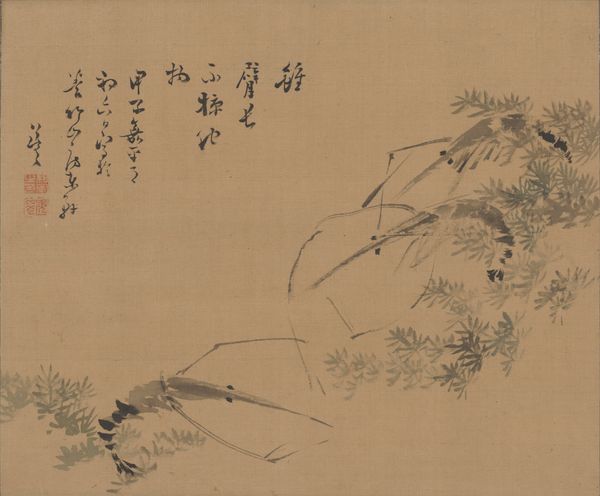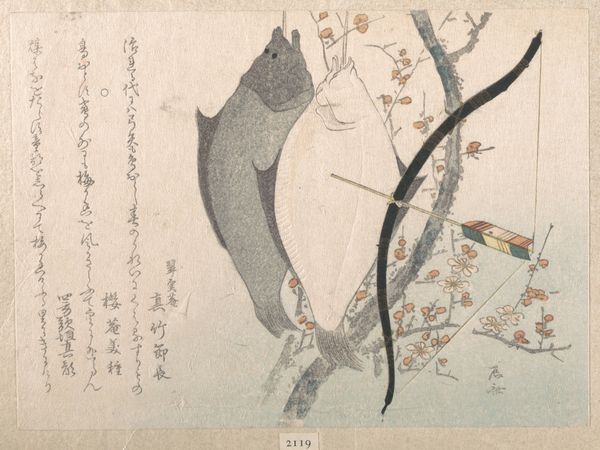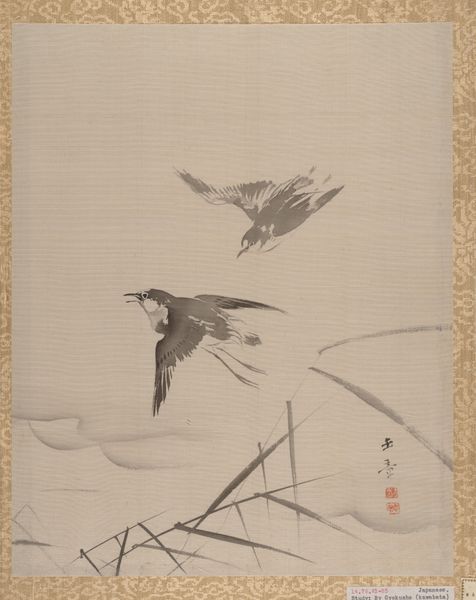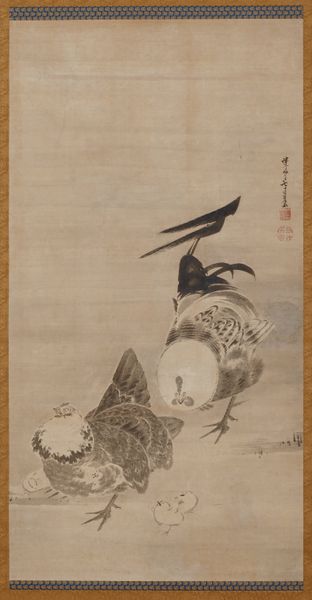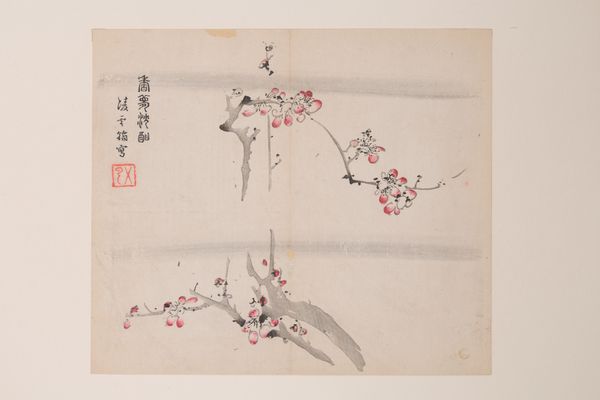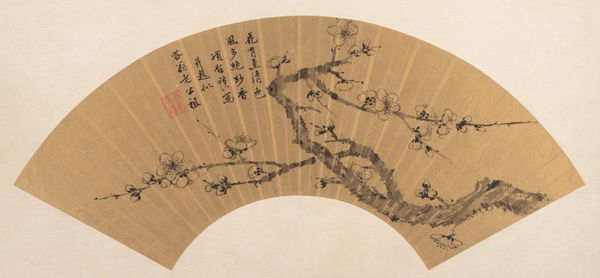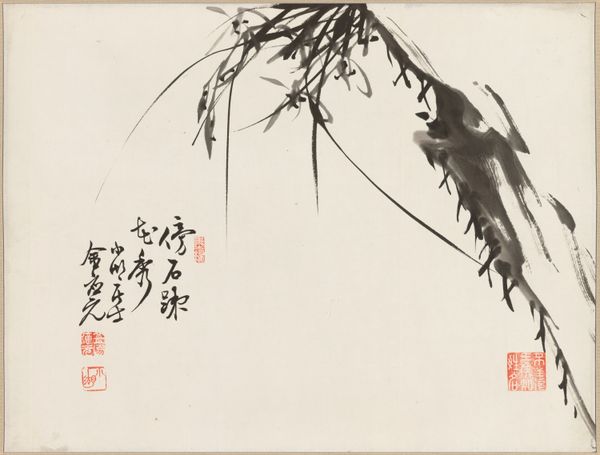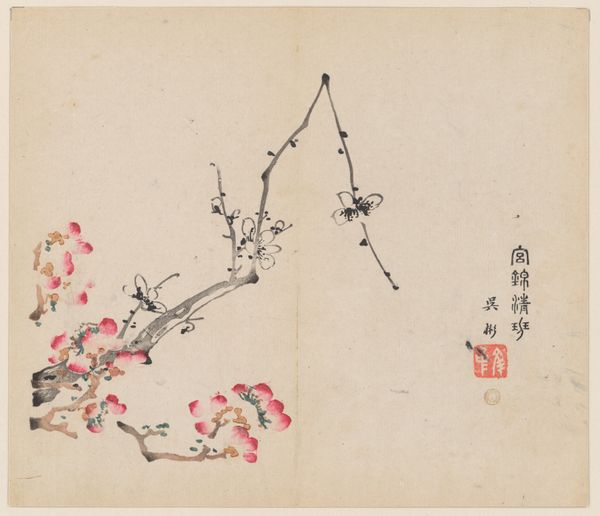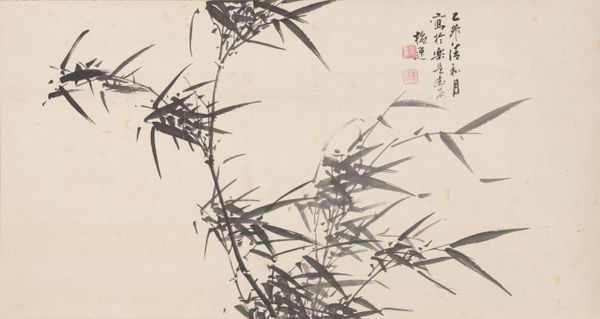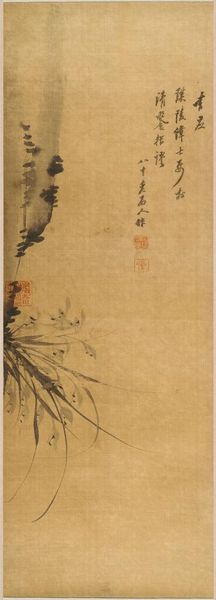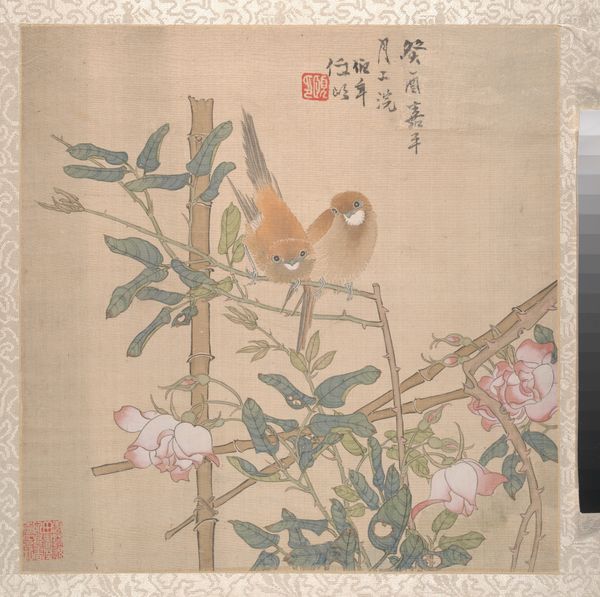
drawing, tempera, paper, ink
#
drawing
#
tempera
#
asian-art
#
landscape
#
bird
#
paper
#
ink
#
orientalism
#
yamato-e
#
calligraphy
Dimensions: Image: 9 5/16 × 10 13/16 in. (23.7 × 27.5 cm) Overall with mounting: 45 7/16 × 16 1/8 in. (115.4 × 41 cm) Overall with knobs: 45 7/16 × 17 15/16 in. (115.4 × 45.5 cm)
Copyright: Public Domain
Unkei Eii painted this hanging scroll, “Bird on a Branch,” in ink on paper during the mid-sixteenth century. The subdued ink wash evokes a quiet, contemplative mood, reflecting the influence of Zen Buddhism on Japanese art and culture. This was a period of significant social and political change in Japan, marked by the decline of the Ashikaga shogunate and the rise of powerful regional lords. Zen Buddhism, with its emphasis on simplicity, meditation, and direct experience, resonated with the warrior class who valued self-discipline and mental fortitude. The choice of subject matter, a small bird perched on a branch, is also significant. Birds in Zen art often symbolize freedom, detachment, and the fleeting nature of existence. The inscription, likely added later, further enhances the artwork's meaning, offering a poetic reflection on the scene. To fully understand the significance of a work like this, it helps to look at historical texts, religious teachings, and the biographies of artists and patrons. These sources shed light on the complex interplay between art, religion, and society in sixteenth-century Japan.
Comments
No comments
Be the first to comment and join the conversation on the ultimate creative platform.

